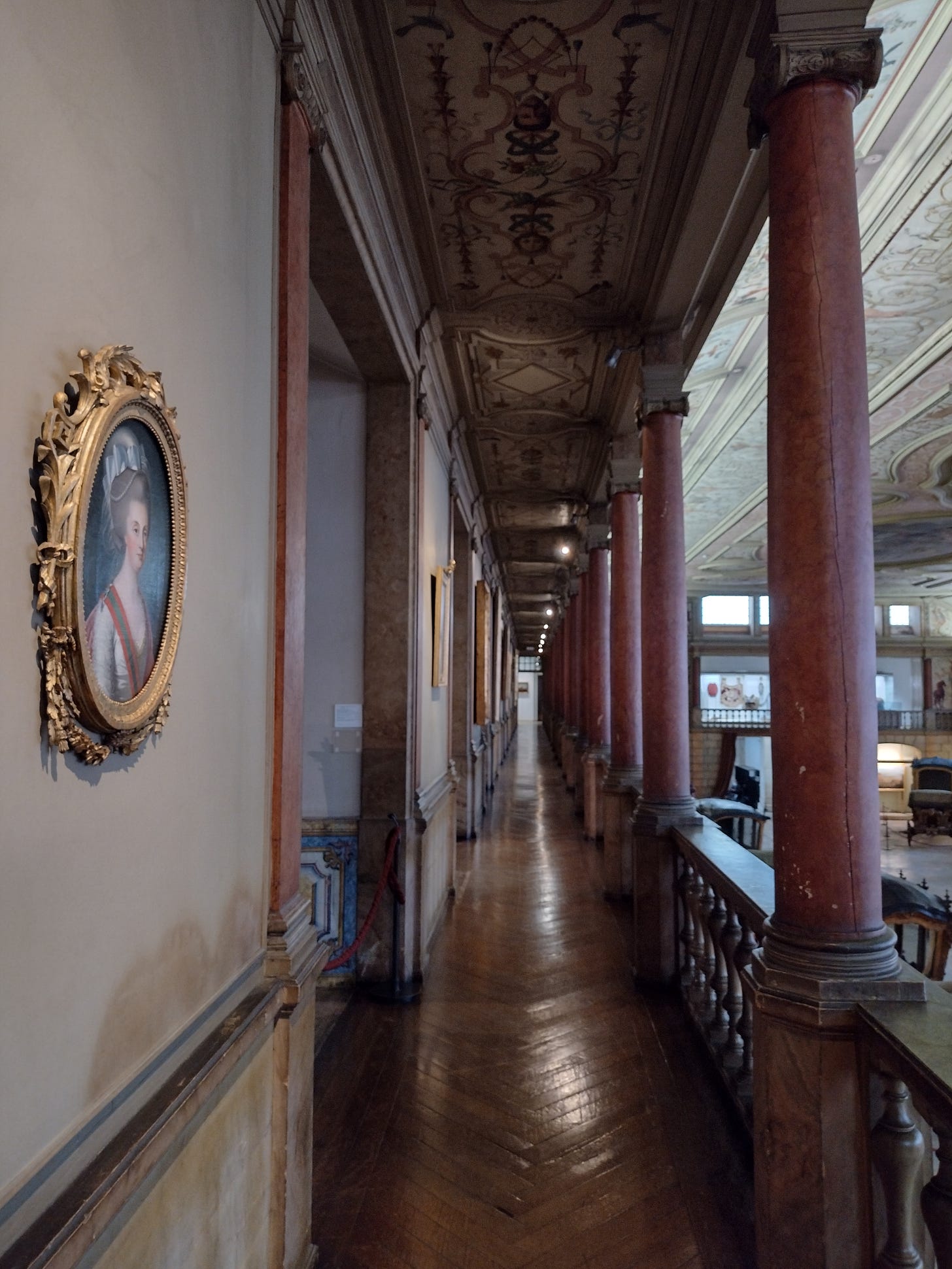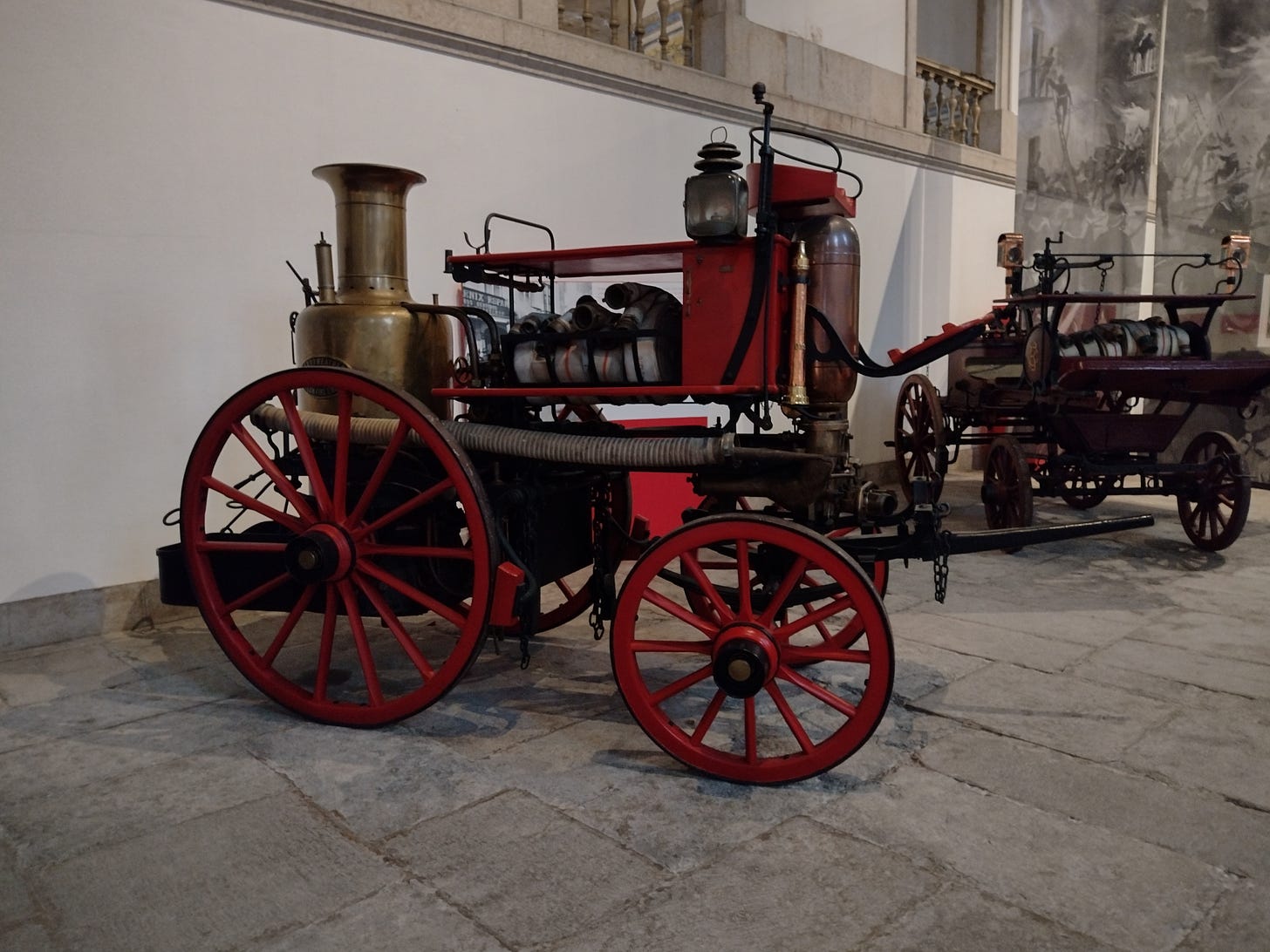
Now that we’re a bit more settled in Portugal, and Covid has loosening its grip on the world (fingers crossed), our goal is to take 1-2 days each week for the next few months and explore this small but history-filled country. Recently, we took the train into Belém, where we visited the National Coach Museum and the Royal Riding School. In my opinion, this is one of the best museums in Lisbon.
The museum is in the Belém district of Lisbon. Belém is a small city rich in architecture, monuments and museums primarily because it survived the devastating Lisbon earthquake of 1755. After the earthquake, Portugal’s royalty moved from Lisbon to Belém, where they felt they’d be safer.
The museum was founded by Queen Amélie of Orléans and Bragança. Queen Amélie, Portugal’s last queen, cared deeply about the Portuguese people and was instrumental in establishing health services for the population including hospitals, pharmacies, and nurseries. She was also a highly regarded philanthropist. As the age of automobiles was rapidly approaching, the Queen recognized the value in preserving the artistic and opulent royal horse-drawn carriages. She proceeded to gather not only the centuries-old carriages and others used for specific purposes, but also the elaborate harnesses, saddles, uniforms, and instruments that were used for accompanying royal processions, outings, or travel.
Museum Inauguration and New Location
The museum was inaugurated in 1905 and was housed in the Royal Riding School. In 2015, most of the collection was moved into a new, modern building which currently displays seventy horse-drawn carriages from Portuguese royalty, spanning from the 16th to the 19th centuries, as well as rotating special exhibits. In a separate building, the original home of the museum, the Royal Riding School houses about ten carriages. Both museums are worth your time. Plan at least 2-3 hours to really appreciate these treasures.
The New Main Building
The new main building is a large, concrete structure – not especially attractive – but modern and spacious and by its looks, not where you would expect to see a collection of centuries-old carriages. The building is located close to the Belém train station. There’s also a tram stop that drops you off at the entrance. The ticket office is opposite from the museum entrance. Enter the museum through glass doors and present your ticket receipt printed with the QR code to gain admittance.
Take an elevator or the stairs to the second floor where there are two long rooms of coaches. Along one wall, you’ll see exhibits behind glass with ornate uniforms, saddles, harnesses, instruments, and other equestrian-related items.
As you move through the exhibit, you’ll notice the evolution of horse-drawn carriages throughout the centuries. From the simple to the elaborate, the coaches speak of a time of opulence, privilege, and innovation.
You’ll notice how the carriage suspensions, seating, strappings, and space improved over time for a more comfortable ride. You’ll see the gradual use of elaborate carvings and paintings on the sides, back and front of many carriages. You’ll notice royal coats of arms. Each coach or collection of coaches in the museum has details about who, how and when the carriage was used. Some exhibits have small monitors that depict the carriages’ history.
There are coaches on display that were used for the clergy and for religious processions, a group of children’s cabriolets, coaches for hunting, delivering mail, and even a prison coach.


The Oceans Coach is an elaborately gold-gilded carved carriage showing figures representing the Atlantic and Indian oceans, symbolizing Portugal’s dominance in exploration.
The impressive Crown State Carriage is displayed with six full-sized replicas of horses and is one of the most elaborate of coaches in the museum. The horses are embellished with decorative equestrian accessories. You can almost hear their hooves moving in unison while pulling this carriage.
The exhibit is further enhanced by videos projected on some of the high white walls with period reenactments depicting members of the Portuguese royalty riding in the very same carriages that are on display.
Landau of the Regicide
During our museum visit, the carriage known as the Landau of the Regicide was on display. On February 1, 1908, this coach carried King Carlos I of Portugal, the husband of Queen Amélie, and their son, heir apparent Luís Filipe, Prince Royal of Portugal, along with the Queen and second son, Manuel, when an assassin attacked the coach killing the King and Prince Luís Filipe and injuring Prince Manuel. The Queen was not injured. The coach still bears the two bullet holes from the assassin.
The Royal Riding School (and an unexpected violin serenade)
Diagonally across the street from the main museum you’ll find the Royal Riding School – the original setting for the Coach Museum. The building was originally used for equestrian riding and Portuguese royalty would watch from the second floor where royal portraits now line the walls.
Today, this part of the Coach Museum holds about ten carriages as well as a room off the main exhibit area where firefighter carriages are displayed.
The building retains much of its original architecture including broad marble staircases, and high, elaborately painted ceilings.
While we were visiting, we noticed chairs set up in a semi-circle towards the front of the main room. A violinist was warming up with beautiful music. As we listened, he came over and introduced himself as Eliseu Silva. He told us the room was being set up for a poetry reading that would take place later in the evening. The Royal Riding School acts as a backdrop for poetry readings from well-known poets across Europe. He explained that he would perform in-between readings. What I found out later was that he’s a violinist maestro and teacher with impressive credentials.
History and Music
Standing in this space and closing my eyes, I felt the emotion of history and my connection to Portugal coming together. The carriages, the ceiling paintings, the perfect acoustics for violin music, transported me to another time and another place where I could almost see and hear the Portuguese ancestors all in their finery, who once occupied this building and these carriages. Silva’s music is incredibly beautiful and I’m sure it contributed to the moment. Check out our video on our YouTube channel and see if you can feel it, too.
If you visit:
National Coach Museum (Museu Nacional dos Coches)
The website details current ticket prices, location, and hours of operation.
Cameras allowed without a flash. Public restrooms available within the buildings.
Thank you for reading Our Portugal Journey. This blog is a subscriber supported publication but has no paywall – in other words, you can subscribe for free and receive all the content. However, if you find my content valuable, please consider becoming a Supporting Subscriber for a nominal fee either on a monthly or annual basis right here. Just want to buy me a glass of wine? You can do that here.
Until next time…
Obrigada!
Carol.




















Beautiful exhibit and great info as usual!!
Fabulous! What a wonderful find!